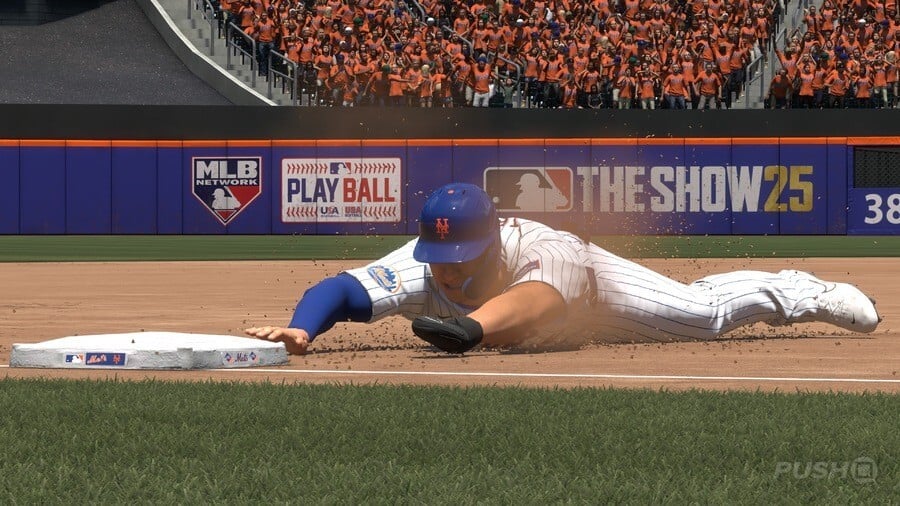
MLB The Show 25 is the latest baseball simulation by PS Studios developer San Diego Studio, inspired and influenced by the 2025 season of Major League Baseball. The game is available on the PS5, in addition to the Xbox Series X|S and Nintendo Switch.
Please do keep in mind that MLB The Show 25 is designed and developed as a live service game, which means while efforts have been invested to ensure all of the information within remains accurate, some gameplay balance and feature details may change over the course of the game's lifespan.
Subscribe to Push Square on YouTube166k
MLB The Show 25 Guide: Gameplay Tips and Tricks
For the first part of our MLB The Show 25 guide, we're going to include a variety of different resources to help you to better master key gameplay concepts, like batting and pitching.
Difficulty
Batting
- How to Hit the Ball Better and More Often
- Best Hitting Interface to Use and Why
- Best Hitting View to Use and Why
Pitching
Fielding
MLB The Show 25 Guide: Ballplayer
For this section of our MLB The Show 25 guide, we're going to focus on the Ballplayer, which is your created character for Road to the Show.
- How to Improve Your Ballplayer in Road to the Show
- How to Use Face Scan When Creating Your Ballplayer
MLB The Show 25 Guide: Diamond Dynasty
For this part of our MLB The Show 25 guide, we're going to explain how to extract the most from the baseball sim's flagship team-building mode, Diamond Dynasty.
MLB The Show 25 Guide: FAQs
For this section of our MLB The Show 25 guide, we're going to field any remaining FAQs or unanswered questions regarding San Diego Studio's baseball sim.
MLB The Show 25 Guide: How to Play Baseball
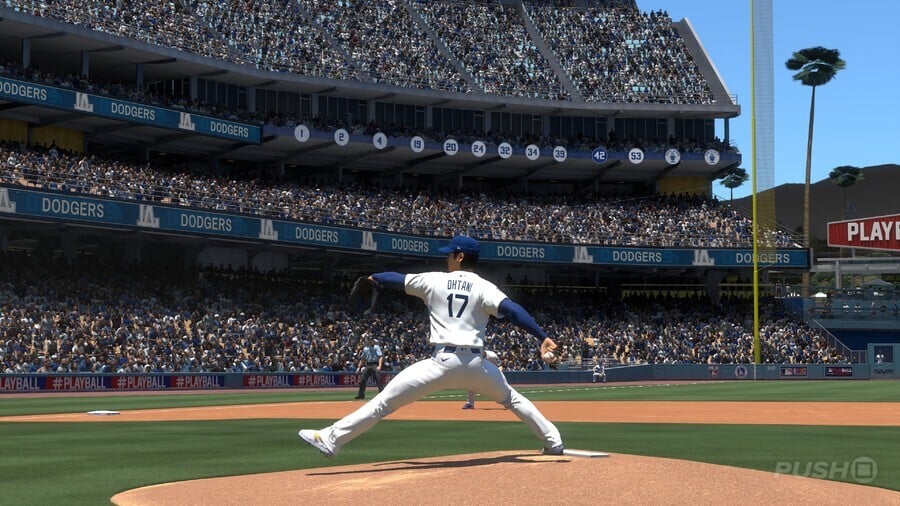
For the final part of our MLB The Show 25 guide, we're going to explain the basics of how to play baseball.
Baseball is a team-based sport where two teams compete to score more runs than their opponents. A run is scored when a player successfully passes all four bases on the field.
An offensive player achieves this by hitting a pitch thrown by the defensive team. An offensive player doesn't need to cross all four bases in one turn, and is safe at any of the three bases on the route to the fourth one. However, if they are tagged between bases by the defensive team then they'll be considered out.
The offensive team can only register three outs before an inning is retired. Each team plays nine innings per match.
Batting and Scoring Explained
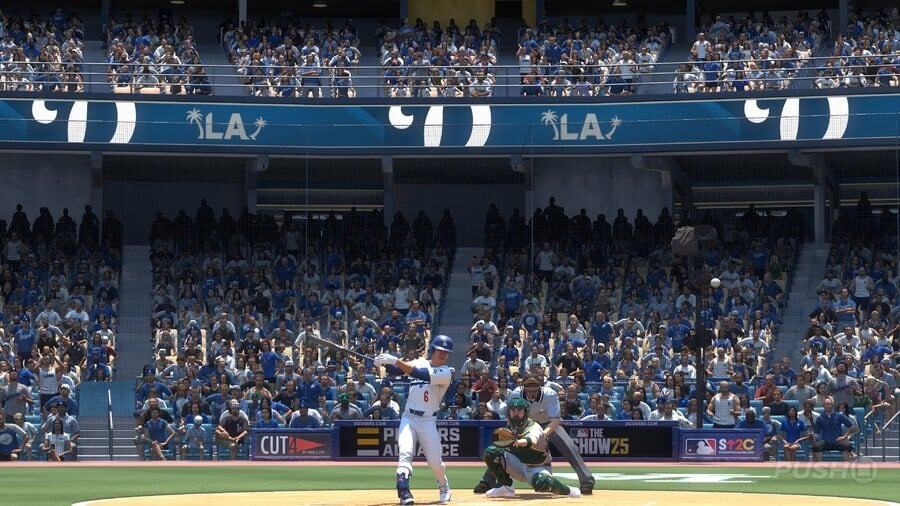
In order to score in baseball, a player will need to hit a pitch and pass all four bases on the field. The easiest and most straightforward way to do this is to hit a home run.
A home run occurs when the ball is hit out of the confines of the field, and into the surrounding infrastructure of the stadium. This guarantees one point, but a team may earn more if there are other offensive players on bases when the home run is scored.
As such, a batter doesn't need to hit a home run to contribute to his team, and can instead gradually advance between the bases over the course of a single inning.
This then becomes a collaborative effort between the offensive players, as different batters attempt to drive in runs, and achieve what is known as RBIs, or runs batted in.
Loading the bases with offensive players is the most effective means of scoring, but the downside is that this gives the defensive team multiple opportunities to register outs.
A grand slam occurs when a home run is scored while the bases are loaded; in other words, there are there are offensive players at first base, second base, and third base. This scores four points.
Each time a player steps up to bat, this is known as an at bat or AB.
Pitching and Fielding Explained
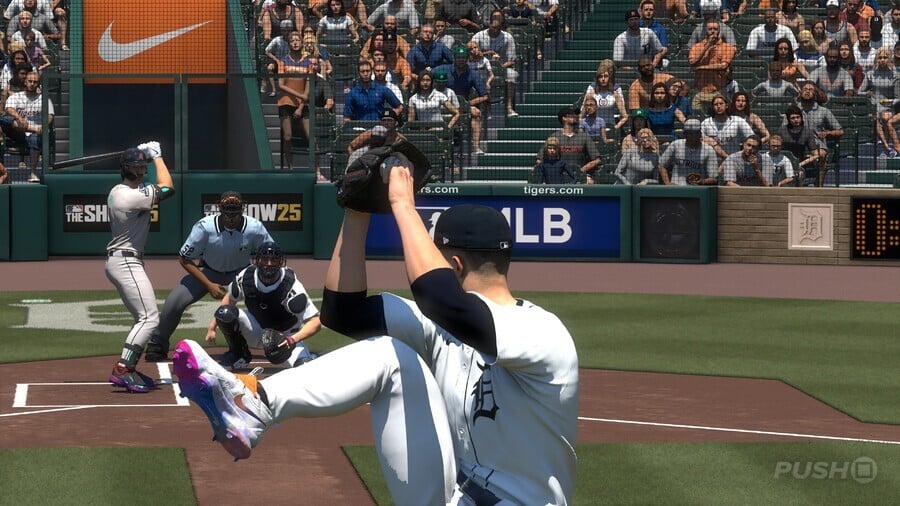
Pitching and fielding is the defensive half of a baseball match. The pitcher stands in the centre of the diamond, which is known as the mound, and must throw the ball to batters using a variety of different techniques.
The ball must pass through a rectangular area named the plate. If the ball passes through the plate without being hit, the pitcher earns a strike. Alternatively, if the batter swings at the ball but fails to make a connection, the pitcher will also earn a strike. If, however, the ball misses the plate but the batter doesn't swing at it, then the batter will earn a ball.
In a single at bat, accumulating three strikes will result in a strikeout. The batter will also be considered out if he fails to reach a base before the defensive team tags him out, or if he hits the ball into the air and the ball's caught before touching the ground. Alternatively, four balls will allow the batter to walk to first base without needing to hit the ball at all.
Between the pitcher and fielders, the defensive team's goal is to amass three outs without their opponent scoring.
It achieves this by leveraging the following roles:
- Pitcher: Throws the ball to the batter from the mound.
- Catcher: Located behind the batter to catch the ball.
- First Base: Occupies the first base position.
- Second Base: Occupies the second base position.
- Third Base: Occupies the third base position.
- Short Stop: Situated between second base and third base on the batter's left.
- Left Field: Occupies the left-side of the outside field.
- Centre Field: Occupies the central area of the outside field.
- Right Field: Occupies the right-side of the outside field.
A good defensive performance begins with the pitcher, who is able to strikeout batters from the mound. However, a hit is registered when the batter is able to bat the ball into the field and find safety at a base. Should a hit occur, then the defensive unit must work in unison to prevent the batter from passing all four bases and scoring.
Foul Balls, Stealing, the Bullpen, and Pinch Hitting Explained
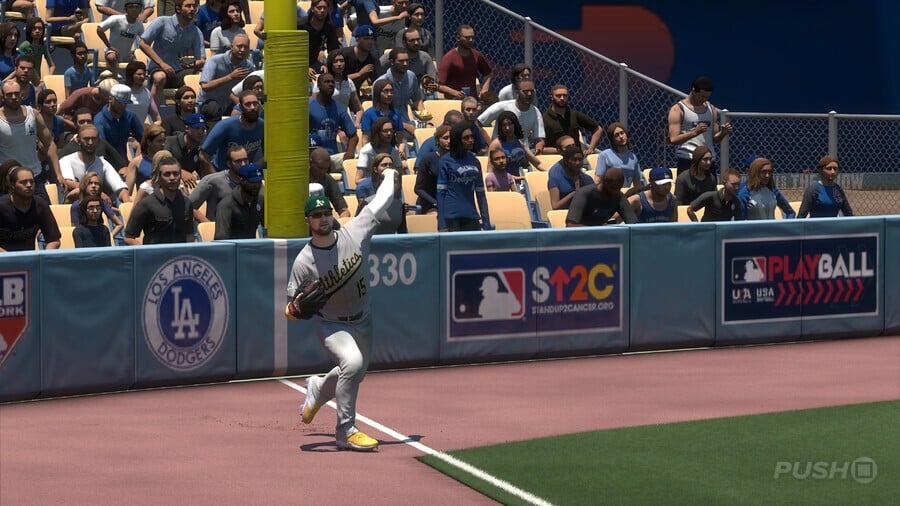
While the basics of how to play baseball are explained in the above sections, there are several other idiosyncrasies to the sport that you should be aware of.
For starters, foul balls occur when the batter makes contact with the ball but fails to put the ball into play, meaning that it falls behind the line. In an at bat, a foul ball counts as a strike, until the batter has accumulated two strikes. After that point, foul balls do not contribute to strikes, meaning that a batter can continuously foul the ball to help tire the pitcher out.
Stealing occurs when a baserunner attempts to sprint to another base during the pitcher's throwing motion. This allows them to move between bases without the batter having to hit the ball. However, the stealing player will need to have the agility to reach the next base before the defensive team tag them out, making this a high-risk manoeuvre.
Due to the demands of pitching, MLB teams have a roster of pitchers that they'll use throughout a match.
The starting pitcher is usually the one with the highest endurance, and will play on average five to eight innings. Other pitchers can warm up throughout the duration of a match in the bullpen, and each team will have different types of pitchers in their roster, such as light relief pitchers, medium relief pitchers, setup pitchers, and closing pitchers. Each of these plays a different role over the course of a nine inning match.
Finally, pinch hitting and pinch running refers to the substitution of a player for another player.
Pinch hitting occurs when the next batter in the lineup is swapped for a different player in the roster to bat. Similarly, pinch running occurs when a player who's on base is substituted for another player, typically one who's faster and has more agility to steal.
That concludes our MLB The Show 25 guide for now, but this is a work in progress, so we'll be updating and adding more content to this page ASAP. Do you have any other tips and tricks to share regarding San Diego Studio's baseball sim? Be sure to let us know, and then hit some dingers in the comments section below.





Comments 0
Wow, no comments yet... why not be the first?
Leave A Comment
Hold on there, you need to login to post a comment...